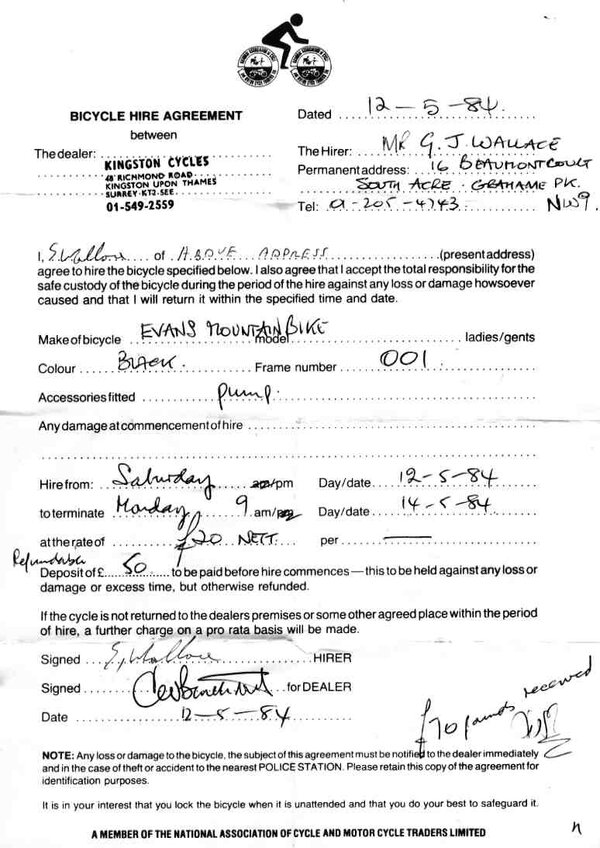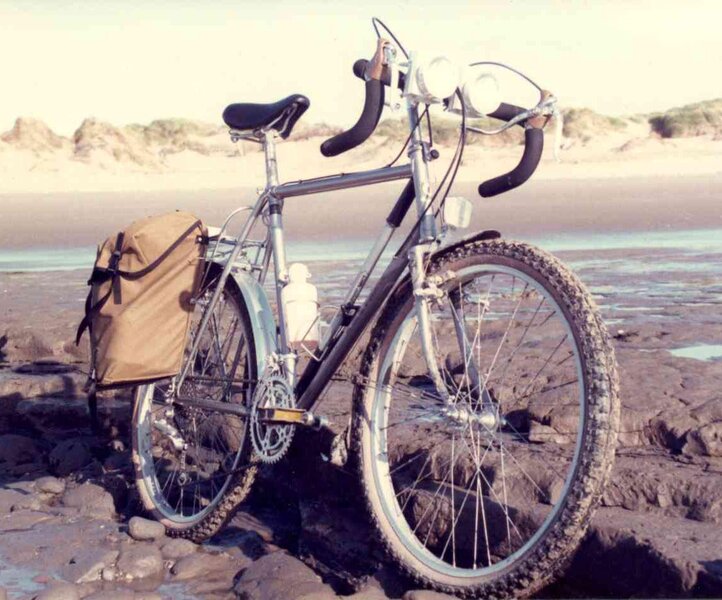Synthiaks
Senior Retro Guru
Yes, memories can play tricks and a bike that was named after an MTB expedition up mount Kilimangaro in 1985 is highly unlikely to predate that event. The imbedding of incorrect facts, or incorrectly conflated facts as above, into long-term memory can turn the most honest of people into abject liars. "Repetition makes truth." so the more the lie is repeated, the more convinced the person becomes that it is an unchallengeable fact. These misrememberings can spread like wildfire and end up being written down as history and fact.
And then there is conformation-bias, where people want so much for something to be true that they search out unconnected information to confirm it.
In the case of the date of the first Saracen / F.W. Evans ATB to be produced, I have no problem with being 1983 but I have to-date, seen no definitive evidence.
We do no that the bike was being advertised in 1984 as the first MTB to be produced in Britain. Such advertising would have come under the scrutiny of the Advertising Standards Authority and so open to challenge by other bicycle manufacturer's or members of the public. So its place as the first US style mountain-bike to be produced in Britain is secured. Though evidence from Cleland's promotional material means that Cleland Aventura holds the position of the first non-US originating mountain-bike to be produced in the UK/ Europe. Cleland only produced mountain-bikes so there is no confusion about what they were producing whilst Saracen produced road bikes before they moved onto making their ATB models.
I am currently gathering contemporary, primary source information about the origins of the Saracen/F.W.Evans ATB. I already have this advert from 1985 that names Gary Smith at F.W. Evans as its designer. I know that I have further contemporary information about Gary Smith's central role in how the bike came into being. However, finding it in my archives is taking time.
Bellow: Advert published in Bicycle Action Magazine in 1985 which states the the bike was: "Designed by Gary Smith of F.W. Evans..." and also that: "...Nick and Dick Crane rode Evans designed Saracen bikes to the top of fabled Kilimanjaro,..."
And yes...the 'Ridgeback' in the 1983 freewheel catalogue trying to claim first 'UK' MTB.....but understand the frames were imported so although sold as British brand, not UK made....just assembled here I assume.
But all this is a well trodden path on this thread!
great you (and others) are gathering all this info...also guess even a month or two on a release date makes a difference, also that these bikes didn't appear form knowhere and protoypes etc may have been around for some.
The guy I bought the Kili from was so convinced, no amount of proof would turn him....he was very nice and definitely had had it form new but just mixed up as to when that was....hopefully he hasn't got his kids birth date wrong as well.

